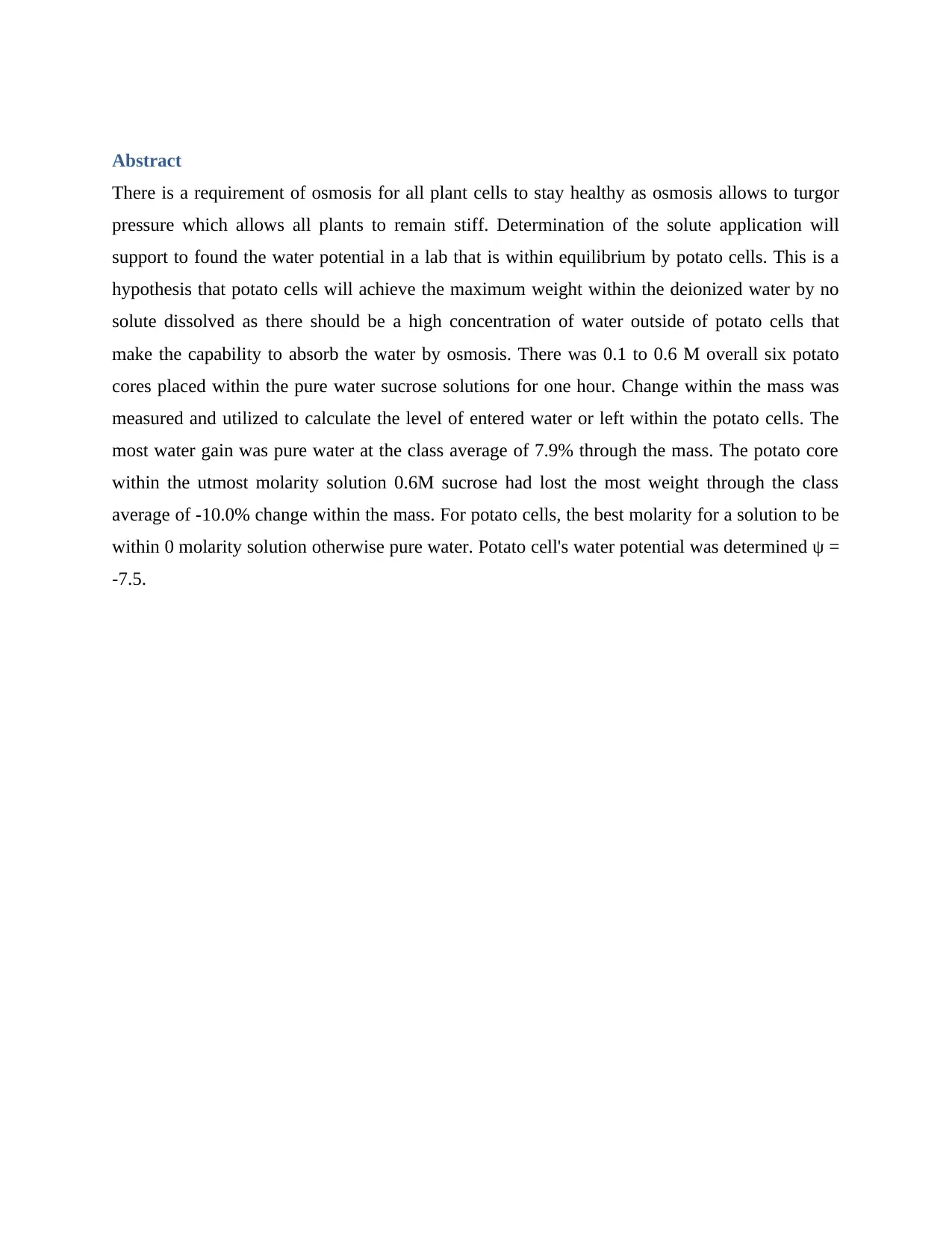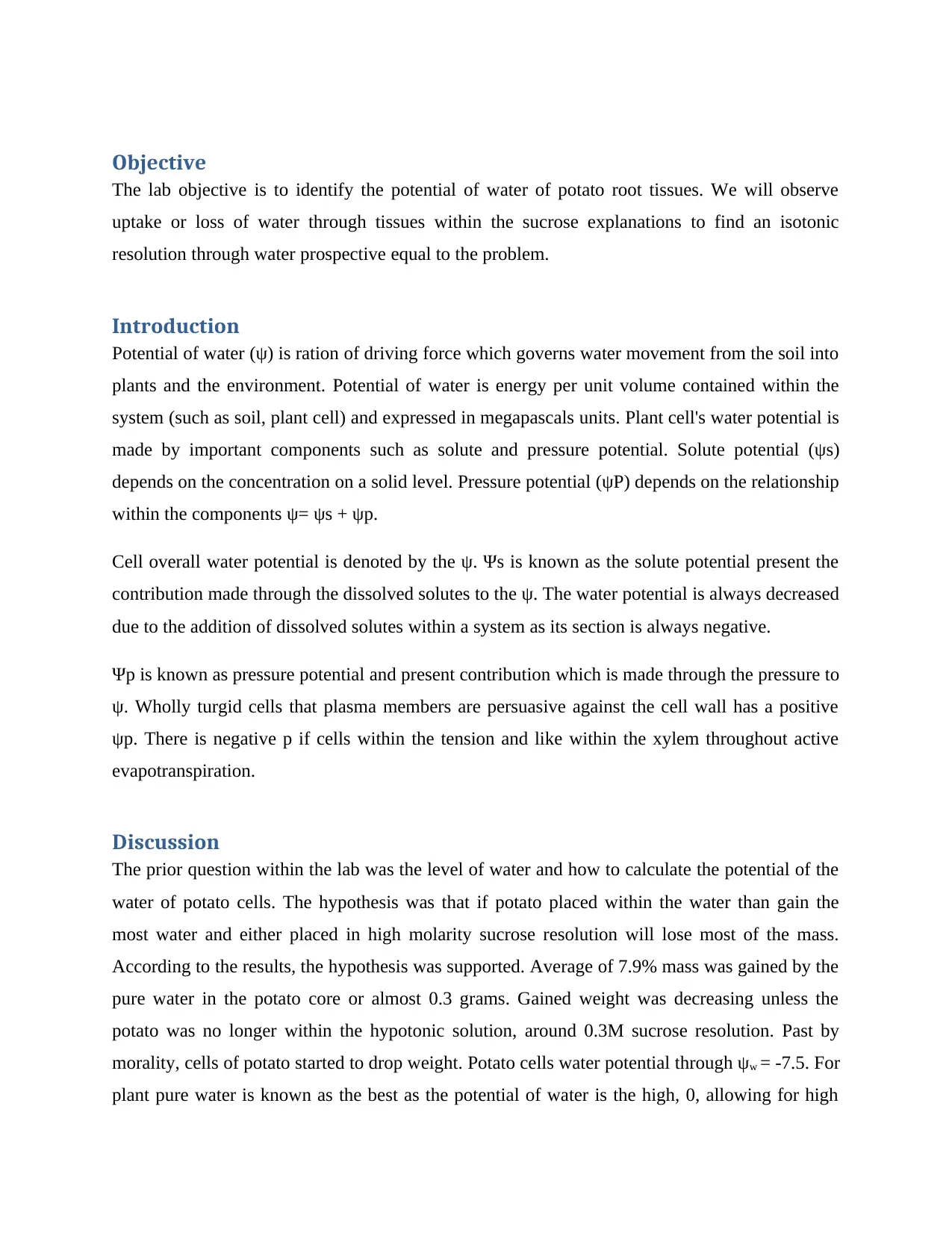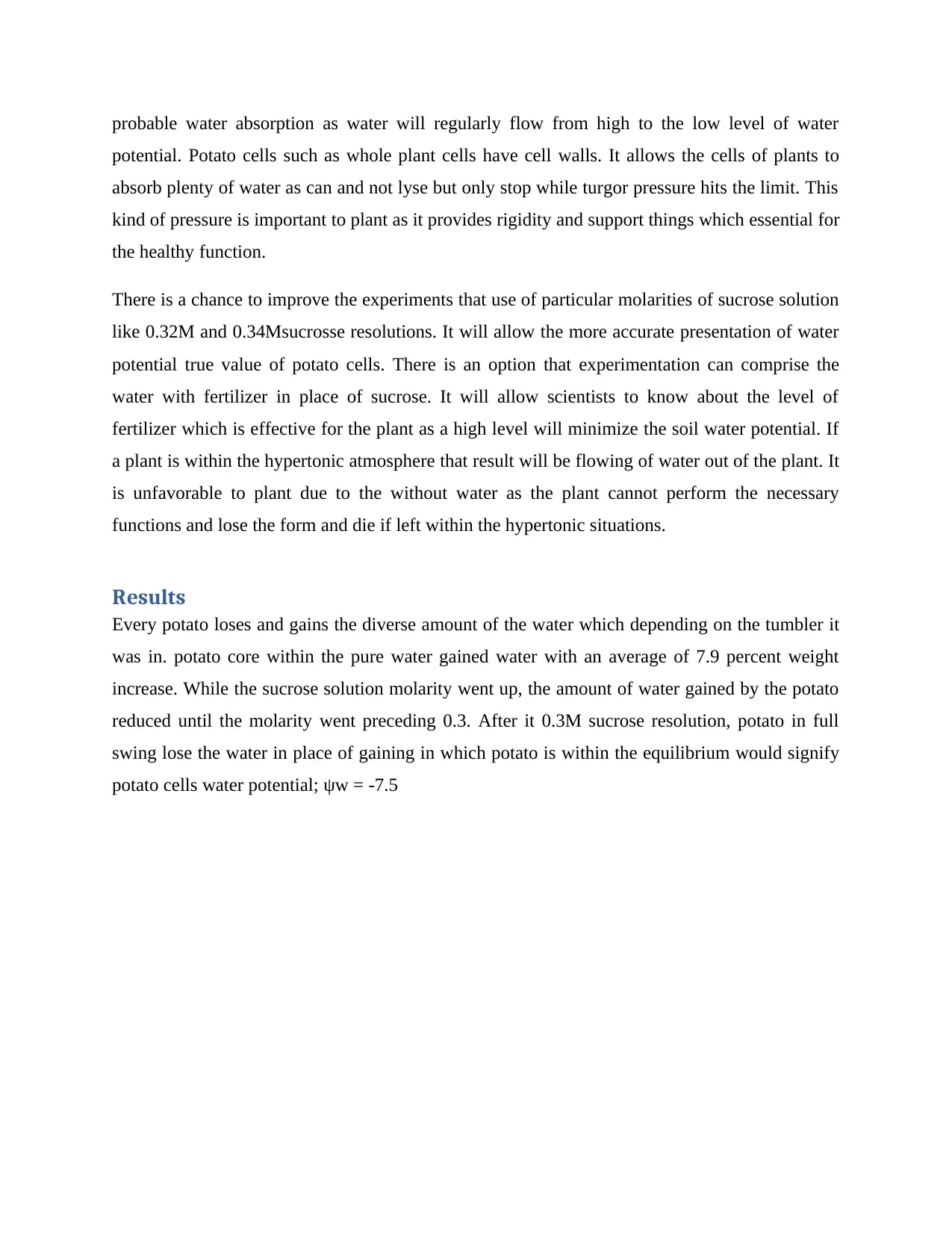Analysis of Osmosis and Water Potential in Potato Cells - Biology
VerifiedAdded on 2022/08/28
|5
|938
|17
Report
AI Summary
This report presents the findings of a biology lab experiment investigating plant water potential using potato cells and sucrose solutions. The objective was to determine the water potential of potato root tissues by observing water uptake or loss in different sucrose solutions. The hypothesis predicted that potato cells in deionized water would gain the most weight due to osmosis. The experiment involved placing potato cores in sucrose solutions of varying molarities and measuring changes in mass. The results supported the hypothesis, with the highest water gain observed in pure water. The report discusses the principles of osmosis, solute and pressure potential, and their impact on plant cell turgor pressure. The report concludes with a discussion of the results, the calculation of water potential, and potential improvements to the experiment, such as using different solute concentrations or fertilizer solutions. The report highlights the importance of water potential for plant health and function and provides a comprehensive analysis of the experimental findings.
1 out of 5







![[object Object]](/_next/static/media/star-bottom.7253800d.svg)